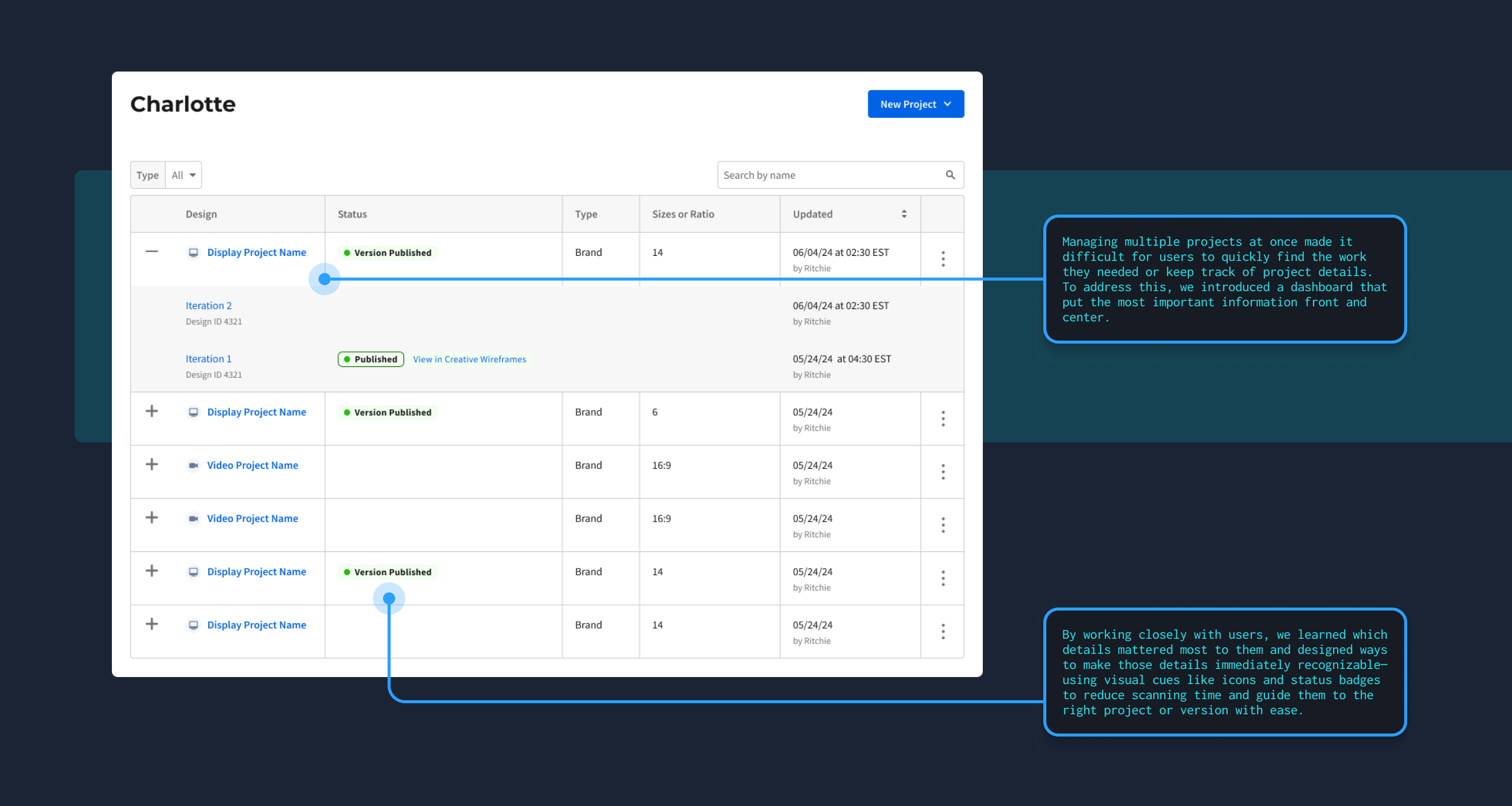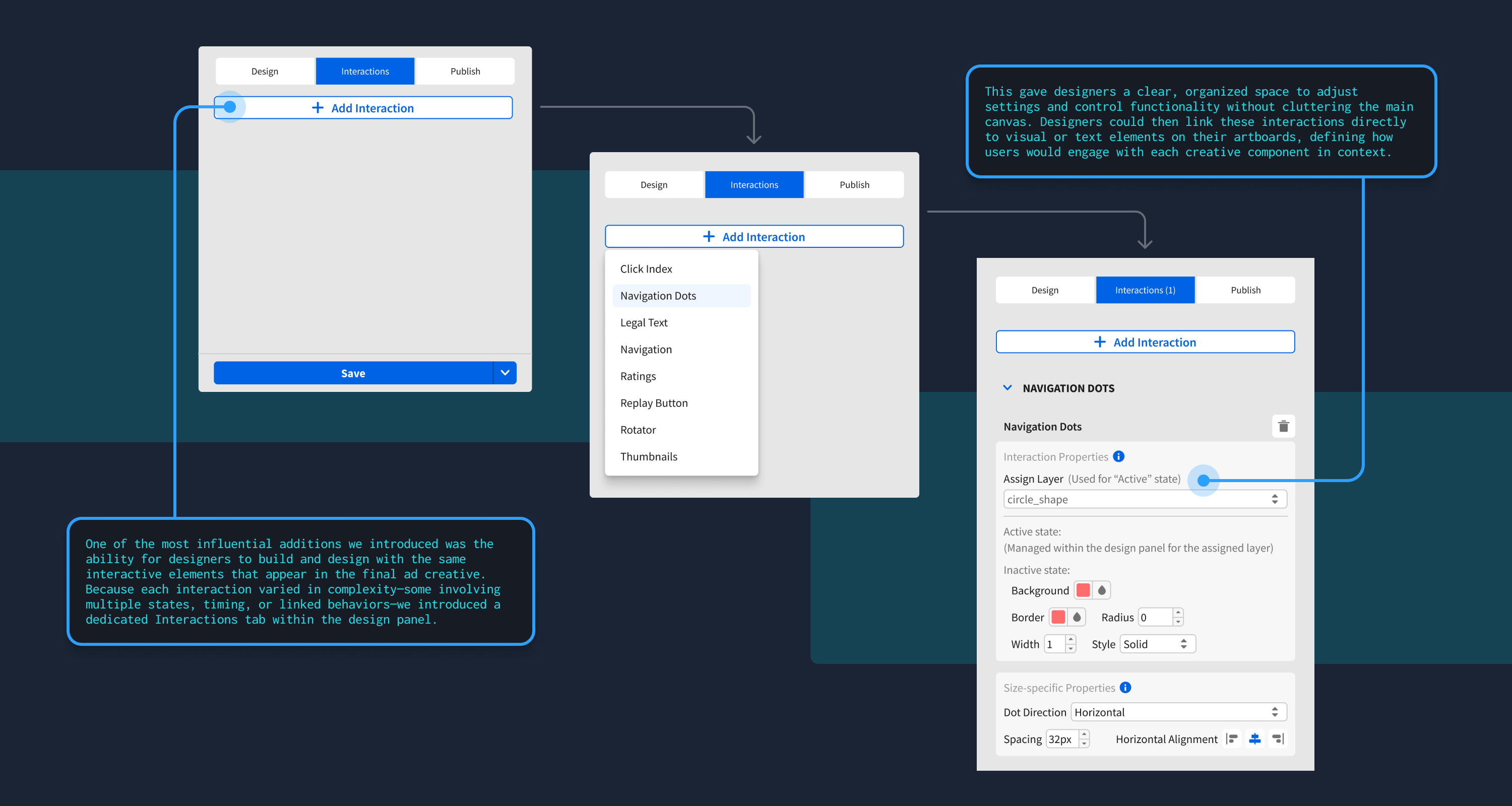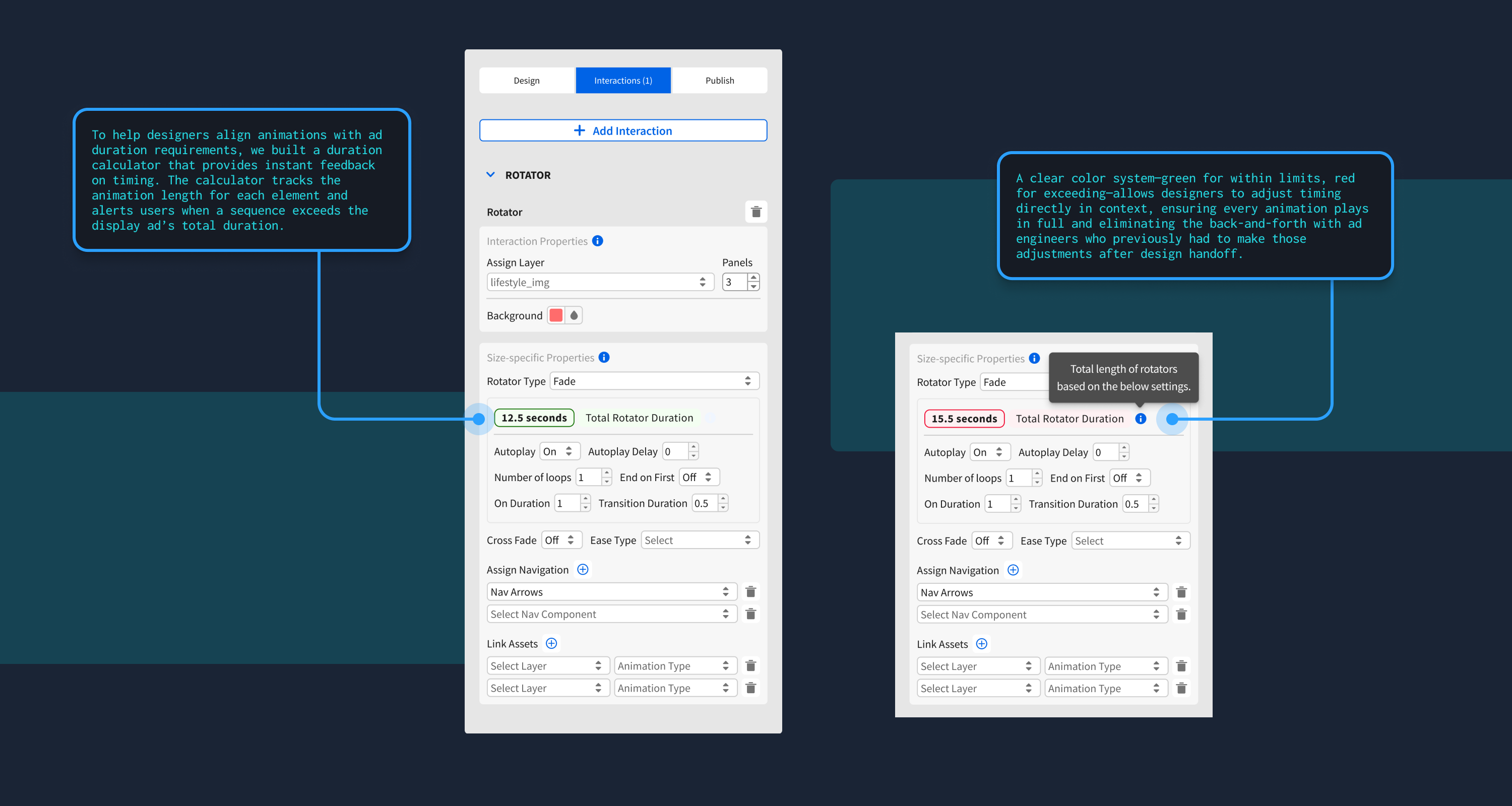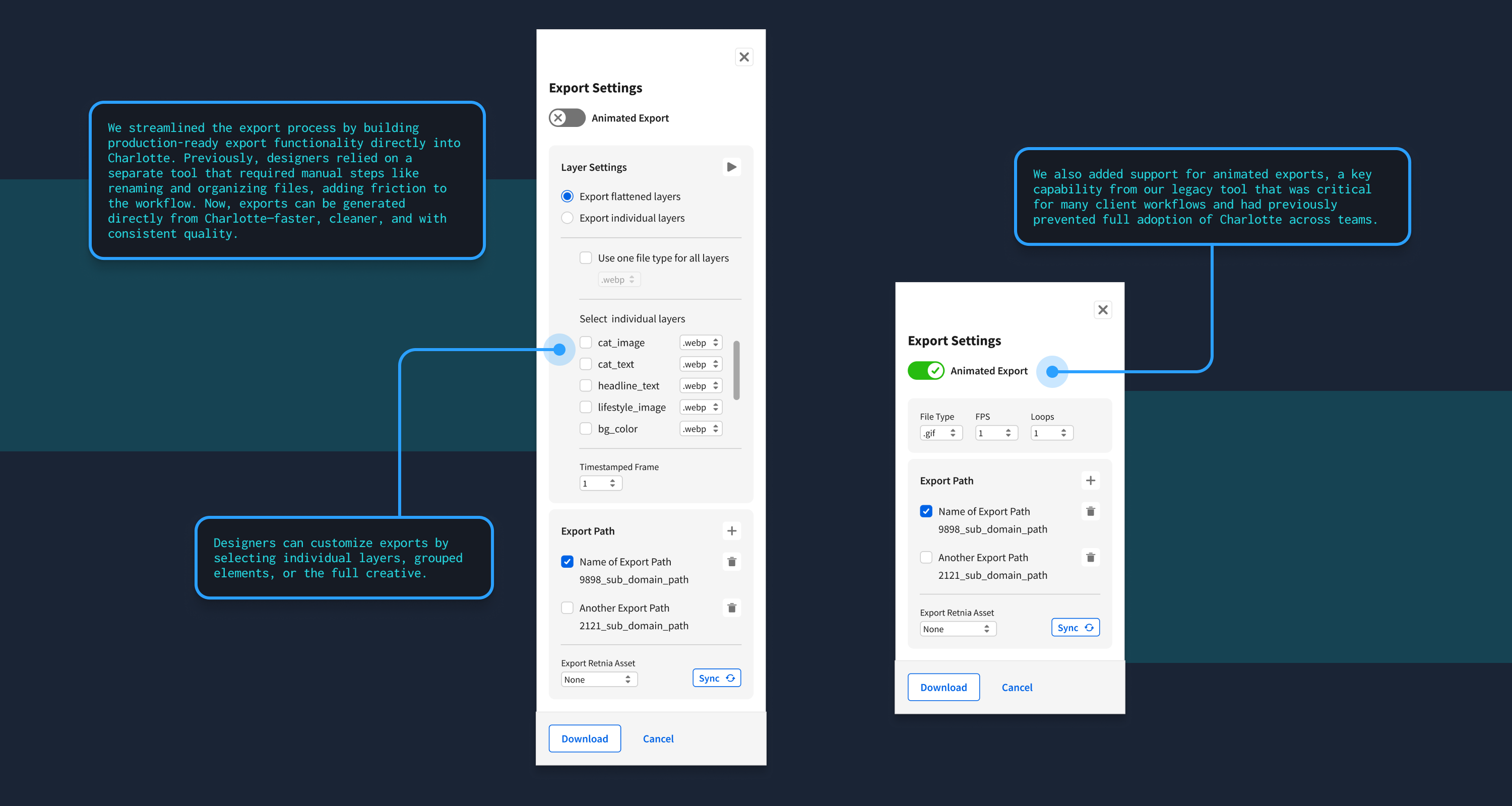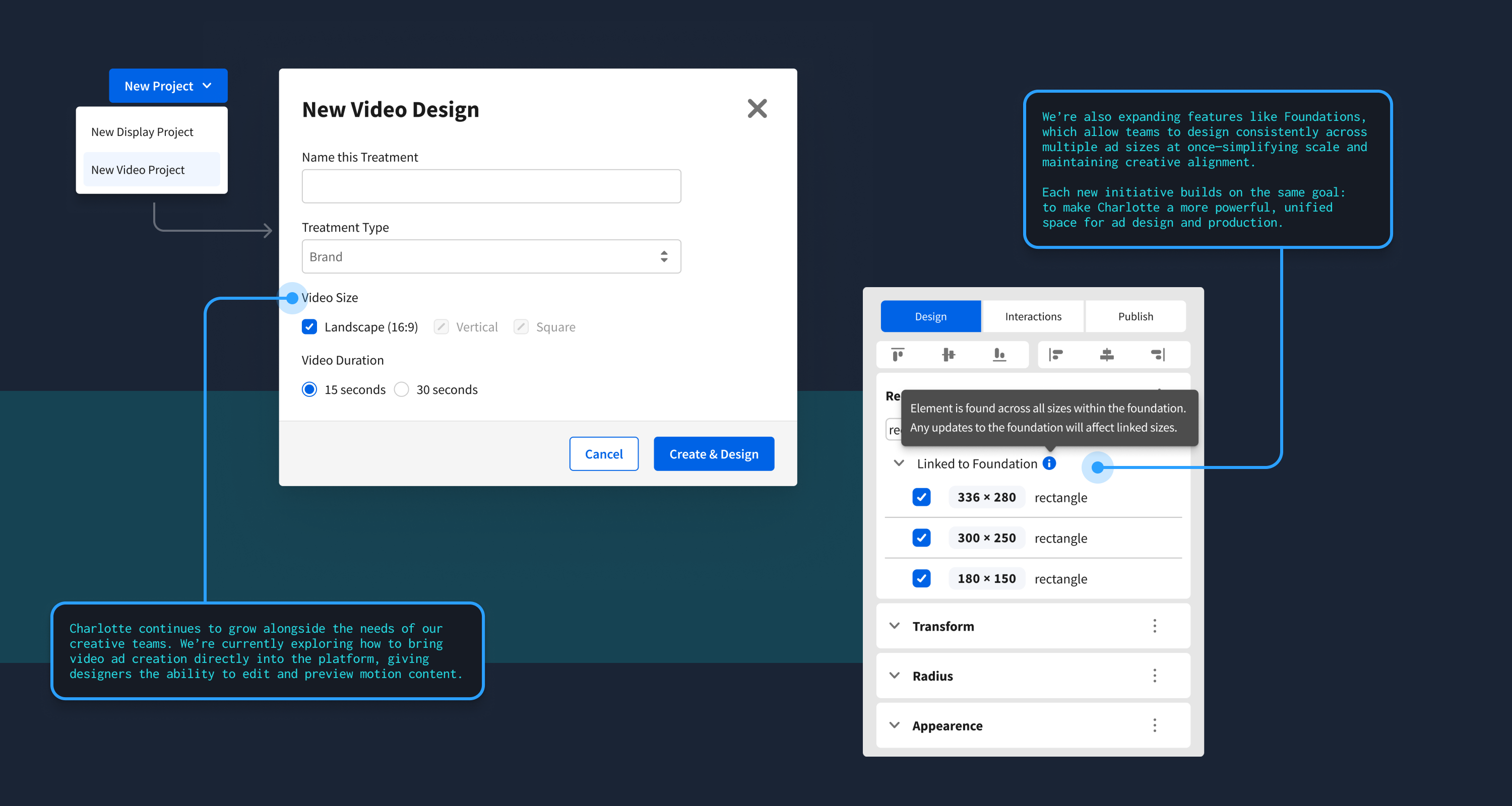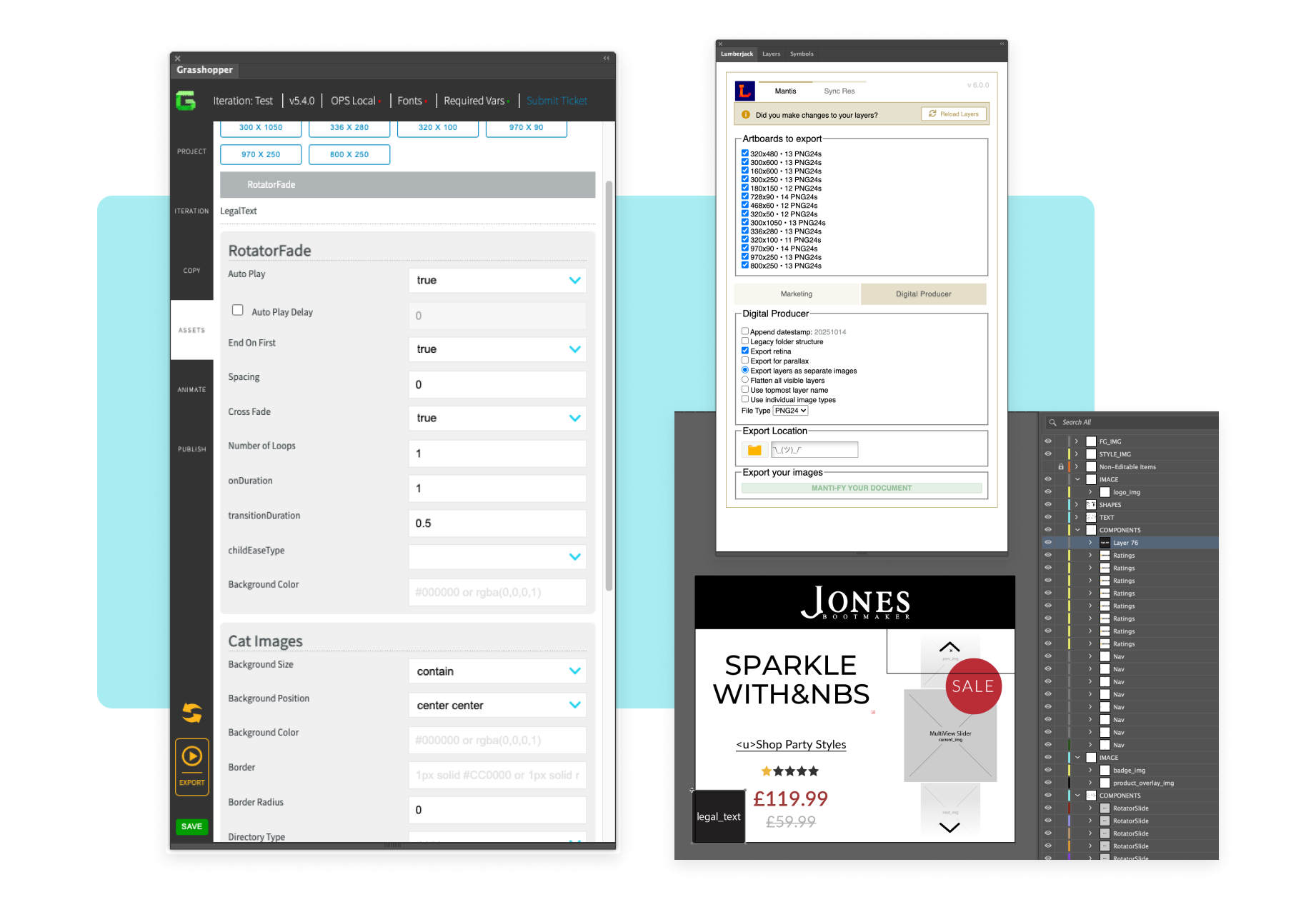
- The legacy plug-ins were layered on top of design files and were cumbersome to use, and often became disorganized as projects grew in complexity.
- Interactive elements were represented by static placeholders, which often led to layout inconsistencies and extra design cleanup once the real functionality was added.
- Projects were difficult to track and organize, leaving designers to rely on naming conventions or external files to find the correct version.
- Video ad design wasn’t directly supported, so designer had to depend on external software for animation previews.
